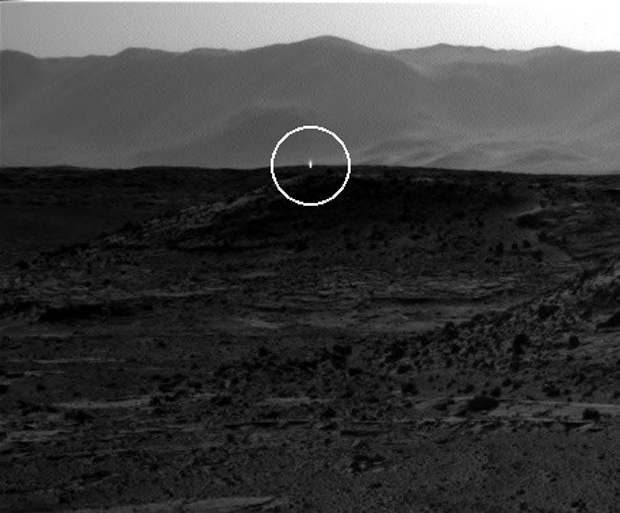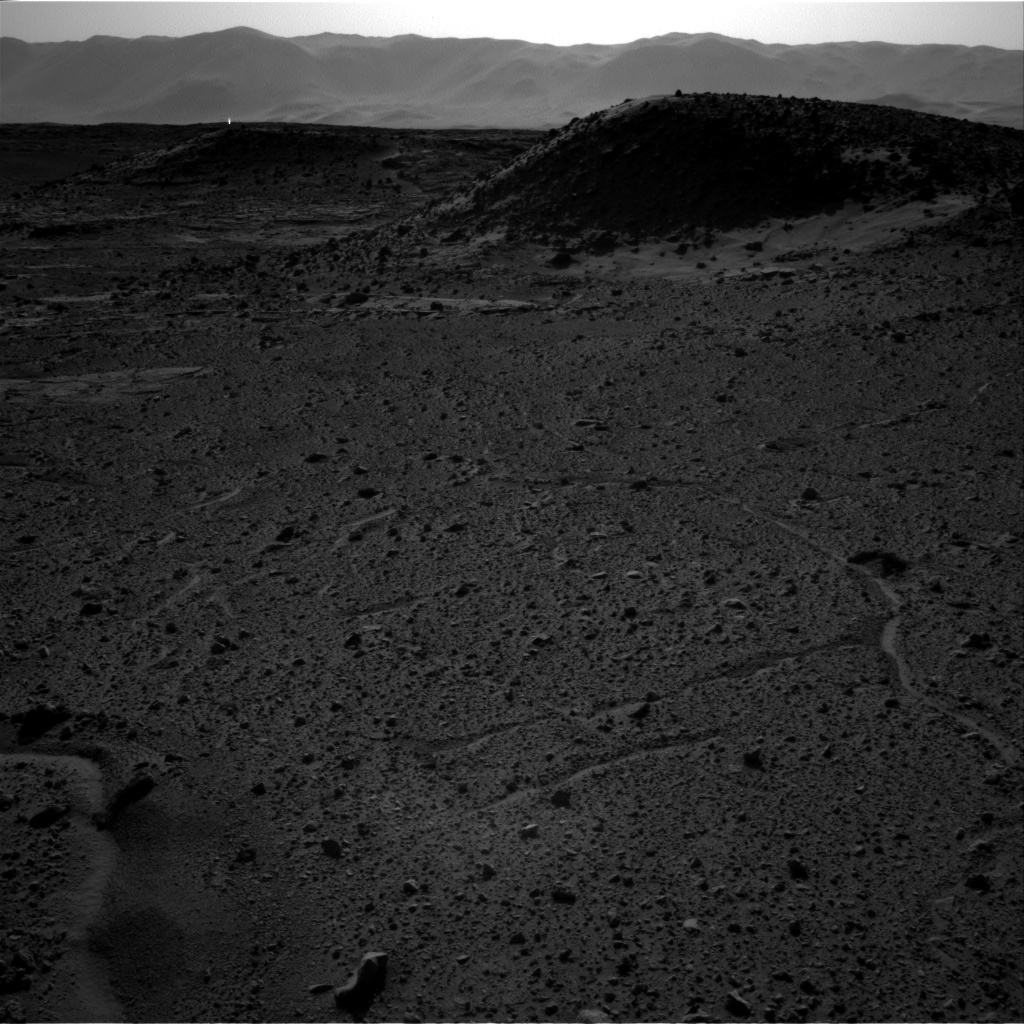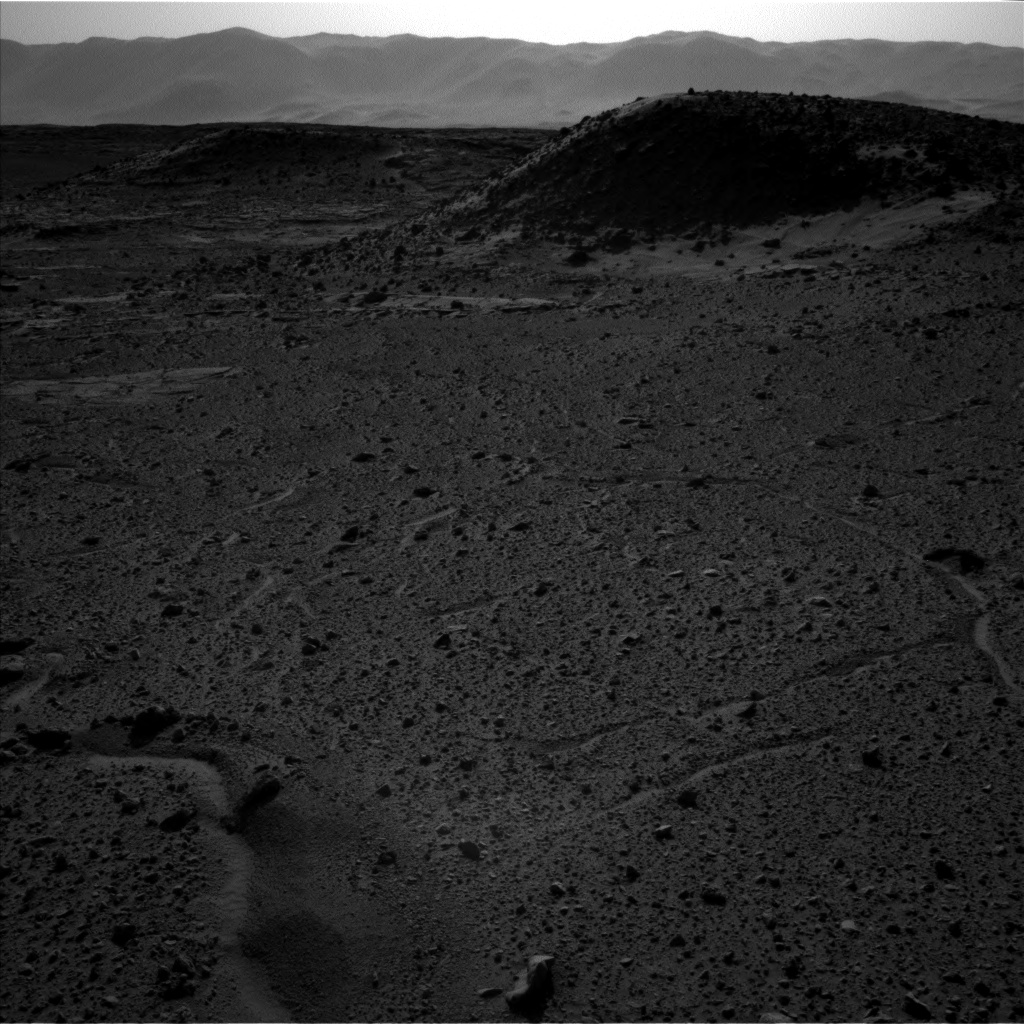This story was updated at 7:55 p.m. EDT.
Scientists are throwing cold water on yet another purported "alien" sighting by NASA's Mars rover Curiosity.

Though UFO enthusiasts may beg to differ, mission team members say bright flashes of light visible in Mars photos taken by the Curiosity rover on April 2 and April 3 almost certainly have a perfectly ordinary explanation.
"One possibility is that the light is the glint from a rock surface reflecting the sun. When these images were taken each day, the sun was in the same direction as the bright spot, west-northwest from the rover, and relatively low in the sky," Justin Maki, the lead for Curiosity's engineering cameras, told Space.com via email. [Mars Illusions: Photos of the "Face on Mars" and Other Martian Tricks]

"The rover science team is also looking at the possibility that the bright spots could be sunlight reaching the camera's CCD [charge-coupled device] directly through a vent hole in the camera housing, which has happened previously on other cameras on Curiosity and other Mars rovers when the geometry of the incoming sunlight relative to the camera is precisely aligned," added Maki, who is based at NASA's Jet Propulsion Laboratory in Pasadena, Calif. "We think it's either a vent-hole light leak or a glinty rock."
It's also possible that the flashes resulted from the impact of fast-moving cosmic rays with the camera, Maki said in a statement released by NASA today (April 8). Whatever the cause, the phenomenon is far from rare.
"In the thousands of images we've received from Curiosity, we see ones with bright spots nearly every week," Maki said in the NASA statement.
Get the Space.com Newsletter
Breaking space news, the latest updates on rocket launches, skywatching events and more!
The two black-and-white photos, which were snapped by Curiosity's right-side navigation camera, appear to show a small flash of light gleaming in the distance, in front of a crater rim that dominates the horizon. UFO buffs jumped on the images, touting them as possible evidence of advanced life on Mars.
"An artificial light source was seen this week in this NASA photo which shows light shining upward from...the ground," Scott Waring wrote at UFO Sightings Daily Monday (April 7). "This could indicate there there [sic] is intelligent life below the ground and uses light as we do."

Waring has found other peculiarities in Curiosity's photos. For example, back in December, he suggested that a panoramic picture snapped by the rover captured a "Mars rat" crouching between two rocks.
The supposed Mars rodent is an example of a psychological phenomenon called pareidolia, which refers to the tendency of the human brain to perceive familiar shapes in vague or random images, experts say. Another example of pareidolia is the famous "face on Mars" supposedly visible in pictures taken by NASA's Viking 1 orbiter in 1976.

The "Mars light" is something different, since it's not a product of anyone's imagination. But the odds are pretty slim that the light is a sign of Martian life, researchers say, especially since the flash is not visible in images of the same spot taken nearly simultaneously on April 2 and April 3 by Curiosity's left-side navigation camera. (The two navcams sit side-by-side on the rover's headlike "mast" and return images that help the mission team plan out Curiosity's routes.)
All of this is not to say that life has never existed on Mars, of course. Curiosity has already found evidence of an ancient stream-and-lake system, suggesting that the Red Planet could have supported microbial life billions of years ago.
Follow Mike Wall on Twitter @michaeldwall and Google+. Follow us @Spacedotcom, Facebook or Google+. Originally published on Space.com.
Join our Space Forums to keep talking space on the latest missions, night sky and more! And if you have a news tip, correction or comment, let us know at: community@space.com.

Michael Wall is a Senior Space Writer with Space.com and joined the team in 2010. He primarily covers exoplanets, spaceflight and military space, but has been known to dabble in the space art beat. His book about the search for alien life, "Out There," was published on Nov. 13, 2018. Before becoming a science writer, Michael worked as a herpetologist and wildlife biologist. He has a Ph.D. in evolutionary biology from the University of Sydney, Australia, a bachelor's degree from the University of Arizona, and a graduate certificate in science writing from the University of California, Santa Cruz. To find out what his latest project is, you can follow Michael on Twitter.









